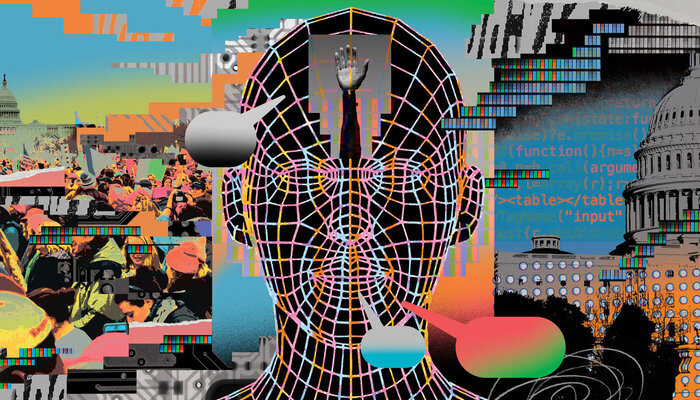AI Integration and Potential Improvements to Legislative Workflows
While Congress is taking tangible steps to keep pace with changes that AI will bring, these measures are just a start. Continued AI integration into congressional workflows, particularly in a bicameral manner, could yield important benefits. In a September 2023 Harvard Business School study, researchers demonstrated that consultants using the generative AI tool GPT-4 for tasks within its capability range were demonstrably more productive — completing 12.2 percent more tasks, doing so 25.1 percent more quickly, and producing 40 percent higher-quality results — than a control group. The skills tested included “conceptualiz[ing] and develop[ing] new product ideas, focusing on aspects such as creativity, analytical skills, persuasiveness and writing skills,” and “problem-solving tasks using quantitative data, customer and company interviews, and including a persuasive writing component.”
The work of these consultants easily maps to much of the work in a typical congressional office: developing ideas for new bills and issue analysis; gleaning information from data and meetings with stakeholders and constituents; assisting in the preparation of memos, press releases, and letters; and fielding questions. If new AI tools — used appropriately and with adequate guardrails — can up the quantity and timeliness of legislative tasks without sacrificing accuracy or quality, then exploring them further is a no-brainer.
Researchers Fotios Fitsilis and Jörn von Lucke recently published the results of their work surveying people working in parliaments worldwide about possible use cases for generative AI in the legislative ecosystem. Notably, most of their work took place before widespread understanding and adoption of generative AI, but the findings are still relevant for gauging how those working in legislatures think that automated technologies could make their work more efficient. The paper identified a range of potential applications — from knowledge management to curating public input, operational efficiencies to oversight — that build on innovations deployed in legislatures around the world utilizing other AI technologies, such as machine learning, NLP, voice recognition, and computer vision. Used with proper safeguards, such technologies can help Congress and other legislatures process and preserve institutional knowledge, automate staff tasks, improve oversight, and strengthen constituent engagement.
Processing and Preserving Institutional Knowledge
Plagued by complex structures and frequent turnover, Congress struggles to retain institutional knowledge. Staff and legislators (including newly elected ones) join and leave the House and Senate regularly. For example, as of December 2023, 33 representatives and 8 senators had issued announcements resulting in seat vacancies leading into the 2024 U.S. elections. Staff turnover happens in even greater numbers. One of those — the upcoming retirement of the long-serving counsel of a key House committee — illustrates this challenge. As with any senior staff turnover, this departure represents a substantial loss of knowledge and expertise. Compounding that loss, more seasoned lobbyists often outmatch younger, less experienced congressional staff.
A range of existing automated technologies can help preserve institutional memory, enabling new lawmakers and congressional staff to easily access information that might otherwise be difficult and time-consuming to locate. These technologies include:
- Tagging: Italy’s parliament uses AI to organize legislative amendments by clustering similar texts.
- Summarizing: In Iceland, citizens can offer suggestions about urban problems on the Better Reykjavik website, which incorporates an AI tool to summarize submissions for policymakers, classify ideas, and flag abusive content.
- Translating: For legislatures required to work in multiple languages, NLP-assisted translation can speed up processes. In June 2023, the European Union announced a new system to facilitate immediate access to machine-translated commission press releases in all 24 official EU languages. (A commission spokesperson did acknowledge, however, that “humans . . . remain essential to spotting any mistakes and adapting machine-translated texts to EU lingo.”)
- Transcribing: Estonia’s parliament uses voice recognition to help transcribe committee proceedings and legislative sessions.
- Advising on internal rules and procedures: South Africa is developing a specialized non-generative AI chatbot for accessing parliamentary information.
- Processing large volumes of information: As the “AI Lobbyist” promises the ability to “read the entire 2,500+ page National Defense Authorization Act” and “extract [relevant] components . . . with just a few clicks,” several third-party generative AI tools offer similar functionality, at least for somewhat smaller chunks of large documents. With a recently announced expanded token window, GPT-4 and Anthropic’s Claude make it possible to drop over 250 pages of text to extract summaries or detailed information about various sections. ChatGPT plug-ins make it easy to parse PDF documents. While that may not yet mean digesting 2500+ pages at once, if used prudently, a section-by-section copy/paste with generative AI tools would be an improvement on the PDF word search process of the Hill’s current workflow.
Looking forward, the GAO’s Innovation Lab has already begun experimenting with using LLMs to query the agency’s reports. As the GAO’s chief data scientist explained in a recent FedScoop interview, “one particular use case the watchdog is thinking about for a generative AI tool that’s trained on the GAO’s reports is using an application programming interface (API) to ‘plug into information within Congress.gov’ on committee hearings and summarize what the agency has already reported on the topic.” And, in October 2023, the GAO deployed its own internal LLM, Project Galileo, which uses a commercial API to access GAO reports.
Automating Tasks and Augmenting Human Researchers
When appropriately used, certain LLMs can process vast amounts of information and assist in synthesizing that information into comprehensible formats like memos and presentations. As Graves, Harris, and Schuman noted, “the clear opportunity for Congress is to use AI to help free up staffing hours from communications and lower-level office tasks, in a similar way to the productivity boost achieved from typewriters and computers.”
One former legislative aide recounted her experience of being overwhelmed by information when preparing for votes, often resorting to hurried online searches:
We were inundated . . . with too much information on a given topic to be able to parse it and take it all into consideration prior to prepping the boss for a vote. We did the absolute best we could on the tight timelines we were given once a vote was announced, but oftentimes, we only had enough time to Google the topic of the bill [and] try to find credible sources on how it was going to affect our state.
Some congressional offices are already using commercial generative AI tools to assist with these tasks. On November 20, 2023, POPVOX Foundation and the R Street Institute hosted webinars for communications and legislative staffers to help them better leverage these tools.
Improving Oversight
AI could act as a pivotal bridge between the authorizers and implementers of federally directed programs. Traditionally, Congress and the executive branch have operated in separate silos, with limited visibility into each other’s processes and regulations. Automation can offer efficient and effective ways for staff to gain insights into agency operations, bypassing the need for extensive networking and physical visits while potentially improving oversight, increasing understanding of program success, and opening avenues for improvement. As described above, AI-driven summarizing and clustering tools can also assist a legislature in parsing lengthy agency reports and other information. Thanks to Rep. Derek Kilmer (D-WA) and former Rep. Blake Farenthold (R-TX)’s Open Government Data Act, government data — including data from federal agencies — is now more accessible and digestible.This improved data availability, combined with AI summarizing and clustering tools, could empower congressional staff and lawmakers to be more informed, better prepared for hearings, and more effective in their oversight roles. Such AI-facilitated interbranch communication could lead to more efficient and informed legislative processes, ultimately benefiting the entire governmental ecosystem.
Strengthening Public Engagement
Generative AI’s ability to explore different facets of an issue could also help staff and legislators gain a broader and more nuanced understanding of how policies might affect or be viewed by various groups. When deployed in custom applications or with targeted data, generative AI can help synthesize and summarize public opinion. For example, the Taiwanese parliament uses the digital platform vTaiwan to conduct public opinion polls about certain issues and produce opinion maps that help lawmakers and participants better understand the electorate’s viewpoints. In Brazil, the AI tool Ulysses helps members of parliament sort through public comments on bills. The platform lets users consider a wider array of factors than a time-pressed staff would be able to glean from more cursory constituent interactions. Properly used, such a tool could foster more thoughtful and effective policymaking.
Mekela Panditharatne, Dan Weiner, and Douglas Kriner write in a recent essay in this series that, with adequate and enforceable safeguards and appropriate tools, federal agency regulators could use LLMs “trained on the corpus of materials and comments relevant to rulemakings to assist in processing, synthesizing, and summarizing information provided by the public.” Similarly, Congress-wide LLMs could help legislators and staff sort through public input. Though Congress does not have a public comment system analogous to those of federal agencies, different congressional committees have experimented with public input on bills. AI could make that model easier to institute on a larger scale.
Legislative staff around the world are beginning to adopt generative AI tools to help inform and write first drafts of press releases and other public-facing documents. As in the international examples above, these tools can augment existing systems by helping staffers manage large volumes of constituent requests in a variety of modalities, especially as the technology improves in accuracy and sophistication. For instance, offices inundated with voicemails from constituents could use voice recognition and tagging software to transcribe and organize those messages, allowing staff to spend more time addressing the substantive issues raised. In 2018, the OpenGov Foundation (which ceased operations in 2019) explored the acute need for this functionality in its report From Voicemails to Votes and launched a prototype called Article One.
More recently, one congressional staffer described being hired as a legislative correspondent for a representative from a state where she had never lived. Her job was to answer anywhere from 500 to 2,000-plus constituent letters a week, which entailed drafting a response to each one. Due to the sheer volume and her lack of local knowledge, she often ended up writing a simple, generic response — a disservice to the lawmaker missing an opportunity to meaningfully connect with and inform a constituent, who in turn deserves a proper response on the issue in question. AI could improve this experience and improve response time both by helping staffers sift through and grasp constituent letters and by crafting replies that are more responsive to constituents’ concerns and reflective of the legislator’s voice and message.




